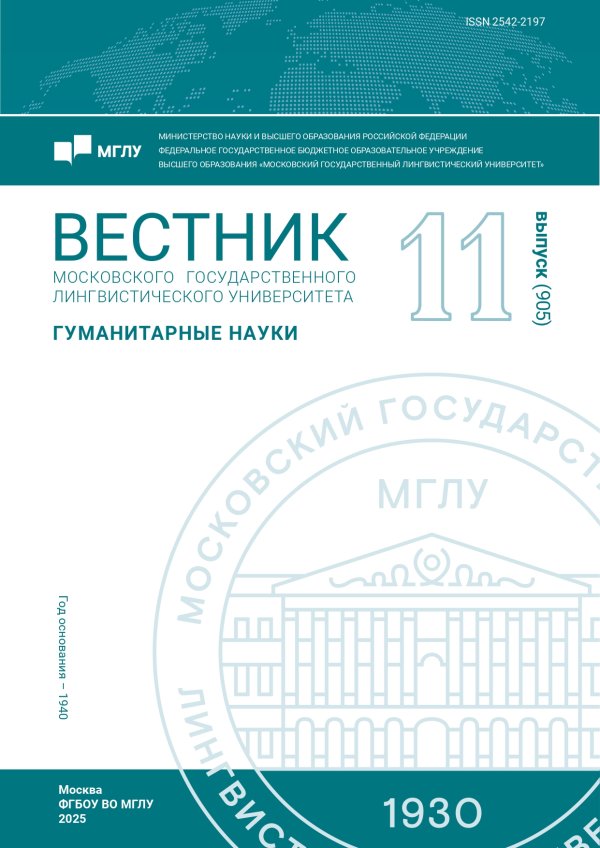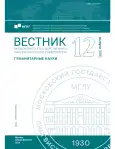ЭКСПРЕССИВНО-ЭМОТИВНЫЕ ХАРАКТЕРИСТИКИ МЕДИЙНОГО ДИСКУРСА США
- Авторы: Глазко П.П.1
-
Учреждения:
- Минский государственный лингвистический университет
- Выпуск: № 12(893) (2024)
- Страницы: 26-31
- Раздел: Языкознание
- URL: https://journal-vniispk.ru/2542-2197/article/view/291694
- ID: 291694
Цитировать
Полный текст
Аннотация
Цель исследования состоит в установлении закономерностей актуализации категорий экспрессивности и эмотивности в англоязычном медиадискурсе США в аспекте их взаимодействия. Результаты лингвостилистического, контекстуального и сопоставительного анализа дают основания для обобщения всего разнообразия взаимодействия рассматриваемых категорий в виде 9 типов экспрессивно-эмотивных комплексов, общей прагматической функцией которых является экстериоризация эмоций автора.
Ключевые слова
Об авторах
Павел Петрович Глазко
Минский государственный лингвистический университет
Автор, ответственный за переписку.
Email: pavel.hlazko@gmail.com
кандидат филологических наук, доцент, докторант кафедры белорусского языка и литературы Минского государственного лингвистического университета
БелоруссияСписок литературы
- Welbers K., Opgenhaffen M. Presenting news on social media // Digital journalism. 2018. Vol. 1. № 7. P. 45–62.
- Заппеттини Ф., Понтон Д. М., Ларина Т. В. Эмоционализация современного медиадискурса: исследовательская повестка дня // Russian Journal of Linguistics. 2021.Т. 25. №3. C. 586–610.
- Иссерс О. С. Грани «новой искренности» в современной политической коммуникации // Вестник Новосибирского государственного университета. Серия: История, филология. 2020. Т. 19. № 6. С. 216–227
- Гладко М. А. Лингвистическая репрезентация «новой искренности» и чувствительности в медиапространстве // Terra Linguistica. 2022. Т. 13. №4. С. 7–21.
- Язык средств массовой информации / О. В. Александрова и др. М.: Академический Проект, Альма Матер, 2008.
- Механизмы экспрессивной окраски языковых единиц / В. Н. Телия и др. М.: Наука, 1991.
- Цоллер В. Н. Соотношение категорий экспрессивности, эмотивности и оценочности в структуре лексического значения // Научные ведомости Белгородского государственного университета. 1998. Т. 2. № 7. С. 43–54.
- Шаховский В. И. Лингвистическая теория эмоций. М.: Гнозис, 2008.
- Lyons J. Semantics. Cambridge University Press, 1977.
- Besnier N. Society for linguistic anthropology. Anthropology News. 1993. Vol. 34, Issue 7. P. 20–21.
- Halliday M. A. K. An Introduction to Functional Grammar. London: Edward Arnold, 1994.
- Leech J. Semantics. Harmondsworth, Penguin, 1974.
- Cruse D. A. Lexical semantics. Cambridge University Press, 1986.
- Martin J. R., White P. R. R. The language of evaluation. Appraisal in English. Palgrave Macmillan, 2005.
- Hunston S., Thompson G. et al. Evaluation in text: Authorial Stance and the construction of discourse. Oxford University Press, 2001.
Дополнительные файлы











